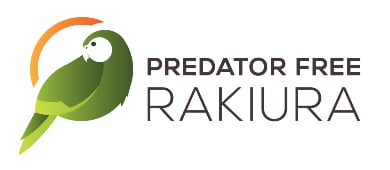Predator Free Rakiura is an ambitious project which aims to remove rats, possums, feral cats and hedgehogs from the island and islands of Rakiura/Stewart Island.
These predators eat or compete with wildlife and have impacts on vegetation.
Mustelids, such as stoats and ferrets, goats, pigs and mice, are not present on Rakiura.

Rakiura/Stewart Island
Rakiura/Stewart Island is an island of untouched landscapes, remote wilderness and distinctive ecosystems. Features include:
- internationally significant dunes
- some of New Zealand’s most pristine freshwater systems
- Stewart Island kiwi/Rakiura tokoeka, kākā, penguins, parakeet/ kākāriki and pigeon/kereru in Halfmoon Bay township
- a national park surrounded by a pristine coastline
- over 90 islands, full of wildlife, that deserve to be protected.
Benefits of a predator free Rakiura
The benefits include wildlife and forest health, meaningful employment, infrastructure opportunities, strengthening high end nature tourism.
Despite Rakiura having far fewer predators than mainland New Zealand, the ones we do have remain a major threat to our native biodiversity.
A Predator Free Rakiura will protect these taonga for generations to come and enable nature and community to thrive together by enjoying the benefits of a restored Rakiura.
Rakiura could become a large-scale haven for species in need of a safe home, such as kākāpō and takahē.
Achieving our vision for New Zealand’s third largest island would be a big step towards achieving a Predator Free New Zealand by 2050.
The team
Predator Free Rakiura is a non-profit alliance led by a diverse collaboration of iwi, government, business, organisations and community representatives who believe that people and nature will be enriched by the removal of predators from Rakiura/Stewart Island. DOC is a member of this alliance which is referred to as the Predator Free Rakiura Leadership Group.
Together the Leadership Group have developed a suite of values and principles that underpin the vision to grow Rakiura as a taonga by working collaboratively towards a predator-free Rakiura that allows ecosystems and community to thrive and benefit from each other. No one entity is responsible, only together will a predator free Rakiura be possible.
The plan
A predator removal project of this size and complexity has never been achieved before. That means the work is challenging and complex, but worth it. The work has been divided into five main phases: prepare, secure, restore, protect and thrive.
DOC supports the long-term project vision. The work of the operations team based on Rakiura contributes to this vision through their activities in species recovery, island biosecurity and visitor education. The team also continues to undertake predator control work across multiple areas on and around Rakiura including:
Tiwai peninsula
We aim to control predators of ground-nesting birds, and to minimise browsing impacts on sensitive ecosystems like the coastal turf fields at Tiwai.
Rakiura mainland possum control
DOC undertakes cyclical pest control over nearly 32,000ha to enable our forest ecosystems to thrive with healthy a canopy, increased bird and invertebrate survival rates and increased nesting success.
Rakiura mainland possum control
Pest free islands
DOC directly manages 3 pest-free island sanctuaries near the main island of Rakiura through biosecurity surveillance and incursion response.
- Codfish Island/Whenua Hou is a nature reserve primarily used to manage a breeding programme for the critically endangered kākāpō but is also a sanctuary for a range of other threatened species.
- Bench Island/Waitaua is a nature reserve sanctuary for invertebrates, coastal plant species and hoiho.
- Ulva Island/Te Wharawhara is an open access sanctuary for a range of threatened bird and plant species and one of Rakiura’s major tourist attractions.
Southern New Zealand Dotterel Recovery Programme
This DOC programme includes a variety of projects with the common aim of saving the critically threatened population from extinction. A major component of the programme is a multi-species predator control project which aims to suppress populations of predator species which kill or destroy dotterel adults, chicks and eggs.
Rakiura mainland Southern New Zealand Dotterel Recovery Programme
Native Island
Native Island is covered with a grid of Good Nature A24 self-resetting traps which aim to reduce the resident rat population to very low levels and quickly reduce the impact of regular incursions from the main island which is only about 60 metres away.
Pearl, Anchorage and Noble Islands
DOC maintains possum exclusion on three large islands near Port Pegasus/Pikihatiti including Pearl, Anchorage and Noble Islands.
Pearl, Anchorage and Noble Islands:
The Department of Conservation is one of many contributors who are undertaking current predator control and biosecurity work.
Further information
Visit the Predator Free Rakiura website
